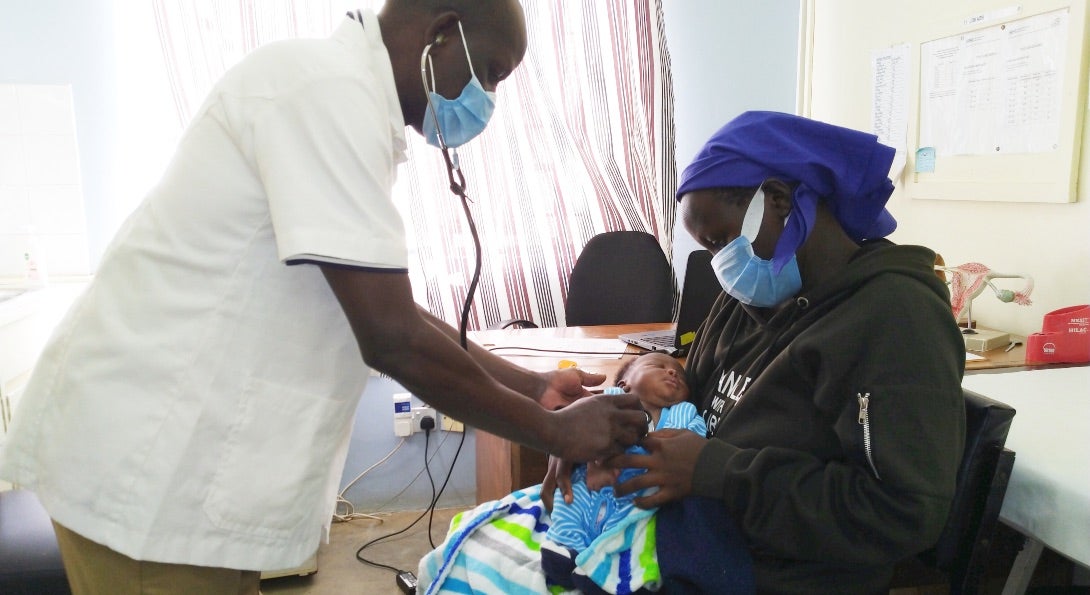Research Examines Early Infant Male Circumcision Best Practices

Story text
In 2007, the World Health Organization and Joint United Nations programme on HIV/AIDS endorsed scale-up of voluntary medical male circumcision as part of comprehensive HIV prevention programs. This move came after three randomized controlled trials, including one at the UIC School of Public Health, showed medical male circumcision reduces the risk of heterosexual acquisition of HIV in men by 57-67 percent.
Since that time, more than 24 million circumcisions have been achieved in the 14 east and Southern African countries, targeted because of their high rates of HIV infections and low proportions of men circumcised. In Kenya, backed by successful scale-up of adult and adolescent circumcisions, its government, non-profit organizations and donors began considering a transition toward early infant male circumcision (EIMC) for a sustainable long-term approach. Because infant circumcision was almost unheard of in Kenya as in most east and southern African countries, introduction of EIMC would have to be done with full local knowledge and community support.
A crucial consideration is the effectiveness and safety of devices used for EIMC. As of 2018, only one device had been approved. Researchers at the UIC School of Public Health, the Nyanza Reproductive Health Society in Kisumu, Kenya and other partners have published a field evaluation of a new device called AccuCirc, providing evidence of its safety and acceptability – two crucial considerations for its approval by the World Health Organization and its acceptance by Kenyan parents and community members
“In evaluating the AccuCirc device for EIMC in Kenya, it was essential to collaborate with Kenyan colleagues in the Ministry of Health and a local university as well as with community-based groups who will be instrumental in integrating the use of the device with existing maternal neonatal and child health programs,” said Robert Bailey, PhD, professor emeritus of epidemiology and biostatistics and the study’s lead author.
In the study, clinical officers and nurses who had previous experience with another EIMC device, the Mogen clamp, participated in a rigorous training process. Clinicians completed classroom-based training, practice sessions on a model, observations of EIMC procedures with the AccuCirc device before engaging in ten EIMC procedures under supervision.
Study subjects were recruited from health facilities in the city of Kisumu and surrounding areas. in western Kenya. Staff trained in the benefits and risks of adult circumcision and EIMC disseminated information to pregnant mothers, as well as new mothers and fathers of a male. Parents were given the option of participating in the study and chose which procedure would be used (AccuCirc or Mogen clamp). Infants up to 60 days of age were given a full physical examination before the procedure. The procedure included doses of Vitamin K to minimize risk of bleeding, use of local anesthesia to eliminate pain and detailed instructions to parents on how to care for the circumcision wound.
The study found use of the AccuCirc device resulted in zero serious adverse events. In less than three percent of cases, bleeding occurred that required application of one to three sutures. Parental satisfaction was very high (99 percent) and 98 percent said they would recommend EIMC to others.
Selected quote
We were heartened that not only was the device efficacious in achieving infant circumcisions safely and with minimal pain, but the parents of the babies were so pleased by the outcomes and the overall experience that they enthusiastically referred others to the study clinics.
| Professor of Epidemiology and Biostatistics
Story text, continued.
Researchers cite several advantages to the AccuCirc device that limit serious adverse events: its inherent design using a shielding ring prohibits laceration injury to the glans penis. Use of the AccuCirc kit is also more affordable compared to employing the Mogen clamp and is completely disposable without requiring sterilization facilities. Also, both parents and clinicians prefer the cosmetic outcomes with use of the AccuCirc.
A drawback to the device is the possibility of failure to achieve a complete incision around the full circumference of the foreskin. About three percent of procedures resulted in incomplete cuts in the study. However, this problem is easily rectified using sterile scissors or a scalpel.
Researchers hope adoption of the AccuCirc device can facilitate scale-up of EIMC in Kenya. Previous studies by the UIC and Kenyan collaboration noted uptake at rates of nearly 30 percent, a rate higher than reported in most other east and southern African nations.
SPH’s Mary Ellen Mackesy-Amiti, PhD, research associate professor of community health sciences, is a co-investigator of the study.